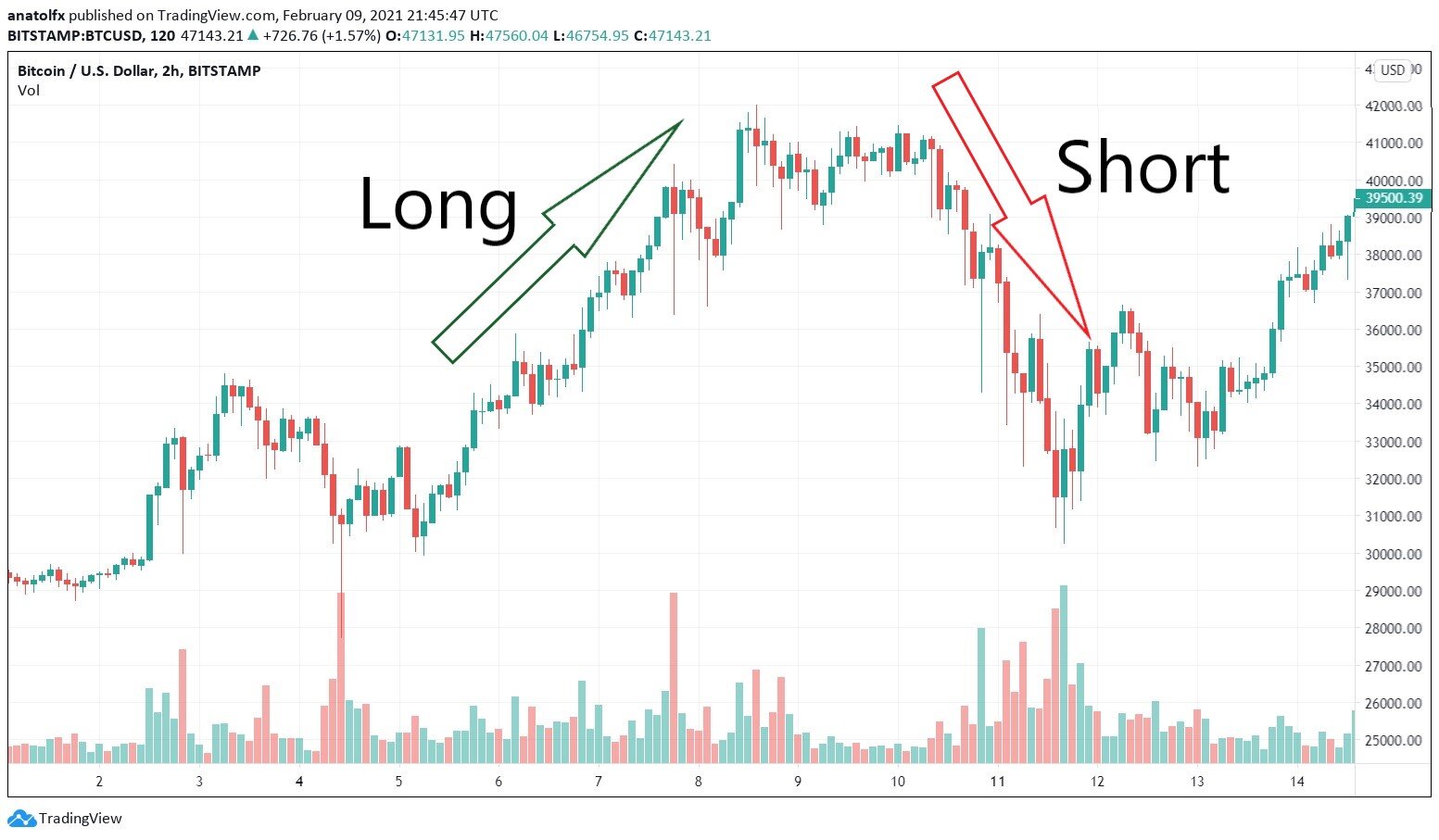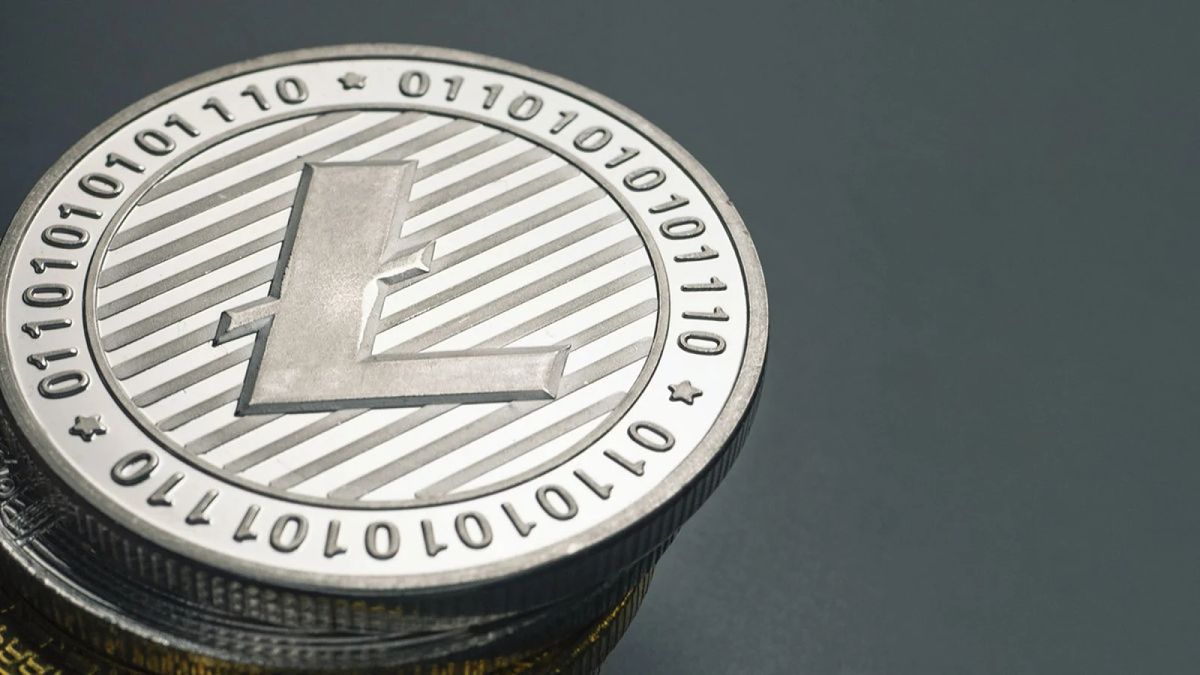Introduction
Are you looking to sell your cryptocurrency? As the popularity of digital currencies like Bitcoin and Ethereum continues to grow, more and more people are entering the world of crypto trading. Whether you’re looking to cash out your investment or take profits from a successful trade, selling cryptocurrency can be a straightforward process if you know the right steps to follow.
In this guide, we will walk you through the process of selling cryptocurrency, from choosing a trading platform to withdrawing your funds. We will also discuss the importance of verifying your identity and reporting taxes on your cryptocurrency sales. So, if you’re ready to turn your cryptocurrency into real-world assets, let’s dive in!
Before we dive into the technical details, let’s first define what cryptocurrency is. Cryptocurrency is a digital or virtual form of money that relies on encryption techniques to secure transactions and control the creation of new units. It operates on a decentralized network called a blockchain, which ensures transparency, security, and immutability.
Unlike traditional fiat currencies issued by central banks, cryptocurrencies are not regulated by any government or financial institution. They exist solely in the digital realm, with their value determined by market forces and the perceived utility and adoption of the underlying technology.
Now that we have a basic understanding of cryptocurrency, let’s explore why you might want to sell it. There can be various reasons for selling cryptocurrency. You might want to realize your investment gains after seeing a substantial increase in value, or you may need the funds for other purposes. Additionally, selling cryptocurrency can be a way to rebalance your investment portfolio or hedge against potential market downturns.
When it comes to selling cryptocurrency, you’ll need to choose a reliable cryptocurrency exchange. In the next section, we’ll discuss the factors to consider when selecting a trading platform and the steps involved in creating an account. So, let’s move on to the next section and start your journey to sell cryptocurrency.
What is cryptocurrency?
Cryptocurrency is a type of digital or virtual currency that uses cryptography for security and operates on decentralized networks called blockchains. It is designed to work as a medium of exchange, just like traditional fiat currencies such as the US dollar or the euro.
Unlike traditional currencies, cryptocurrencies are not issued or regulated by any central authority, such as a government or a bank. Instead, they rely on cryptographic technology to secure transactions and control the creation of new units. This decentralized nature makes cryptocurrencies resistant to censorship and interference from third parties.
The most well-known cryptocurrency is Bitcoin, which was created in 2009 by an anonymous person or group of people using the pseudonym Satoshi Nakamoto. Since then, thousands of other cryptocurrencies, commonly referred to as altcoins, have been developed, each with its own unique features and purposes.
One of the key features of cryptocurrencies is their use of blockchain technology. A blockchain is a public and transparent ledger that records all transactions made with a particular cryptocurrency. It ensures the integrity and security of the system by validating and verifying each transaction through a network of computers, known as nodes.
Another important characteristic of cryptocurrencies is their limited supply. Most cryptocurrencies have a predetermined maximum supply, which means that there is a cap on the total number of coins or tokens that can ever exist. This scarcity helps to create a sense of value and can contribute to price appreciation over time.
Cryptocurrencies can be used for a variety of purposes. Some people see them as a form of investment, hoping that their value will increase over time. Others use cryptocurrencies for online purchases or as a means of transferring money internationally, taking advantage of their low transaction fees and fast transaction speeds.
It’s important to note that the value of cryptocurrencies can be volatile, meaning that their prices can fluctuate significantly in a short period. This volatility is due to various factors, including market speculation, regulatory developments, and technological advancements.
In the next section, we will discuss why you might want to sell your cryptocurrency and the factors to consider when choosing a cryptocurrency exchange. So, let’s move forward and explore the world of selling cryptocurrencies.
Why would you want to sell cryptocurrency?
There can be several reasons why you might want to sell your cryptocurrency. Whether you’re a seasoned investor or a casual trader, it’s essential to understand your motivations and evaluate the right time to sell. Here are some common scenarios in which selling cryptocurrency may be a consideration:
- Realizing investment gains: One of the primary reasons people sell their cryptocurrency is to take profits. If you’ve invested in a cryptocurrency that has experienced significant price appreciation, selling can allow you to lock in your gains and convert your digital assets into traditional currency.
- Need for liquidity: Selling cryptocurrency may be necessary when you require immediate access to funds. Whether it’s for an emergency expense, a large purchase, or an investment opportunity in another market, selling your crypto can provide the liquidity you need.
- Rebalancing your portfolio: If you hold a diversified investment portfolio, including cryptocurrencies, you may periodically rebalance your holdings to maintain your desired asset allocation. Selling some of your crypto holdings can help you adjust your portfolio composition and reduce exposure to the cryptocurrency market.
- Hedging against market volatility: Cryptocurrency markets can be highly volatile, with prices fluctuating rapidly. Selling cryptocurrency can be a way to reduce potential losses or protect your investment from market downturns by converting it into more stable assets.
- Regulatory or legal considerations: In some cases, changes in regulatory or legal frameworks surrounding cryptocurrencies may prompt individuals or businesses to sell their holdings. Compliance with local laws and regulations is crucial, and selling your cryptocurrency may be necessary to ensure compliance or mitigate legal risks.
It’s important to consider your individual financial goals, risk tolerance, and market conditions when deciding to sell your cryptocurrency. Keep in mind that markets can be unpredictable, and it can be challenging to time the sale perfectly. It may be helpful to consult with a financial advisor or conduct thorough research before making any selling decisions.
In the next section, we will explore the process of choosing a cryptocurrency exchange, which is an essential step in selling your digital assets. So, let’s move forward and learn about selecting the right trading platform.
Choosing a cryptocurrency exchange
When it comes to selling cryptocurrency, choosing the right cryptocurrency exchange is crucial. A cryptocurrency exchange is a digital platform where you can buy, sell, and trade cryptocurrencies. With the growing popularity of cryptocurrencies, there are numerous exchanges available, each with its own features and offerings. Here are some factors to consider when selecting a cryptocurrency exchange:
- Reputation and security: Look for an exchange with a strong reputation and a track record of security. Research the exchange’s history, check user reviews, and ensure that it employs robust security measures, such as two-factor authentication and cold storage for funds.
- Liquidity: Liquidity refers to the ease with which an asset can be bought or sold without causing significant price fluctuations. Choose an exchange with high trading volumes and a large user base to ensure there are enough buyers or sellers for your desired cryptocurrency.
- Supported cryptocurrencies: If you have a specific cryptocurrency that you want to sell, make sure the exchange supports it. Not all exchanges offer the same range of cryptocurrencies, so ensure that your desired crypto is listed on the platform.
- Exchange fees: Different exchanges have varying fee structures, including transaction fees, withdrawal fees, and deposit fees. Consider the overall cost of using the exchange, especially if you plan to make frequent trades or sell large amounts of cryptocurrency.
- User interface and experience: A user-friendly interface can make the selling process more straightforward and intuitive. Look for an exchange that offers a clean and intuitive interface, with features such as order books, price charts, and trade history readily available for analysis.
- Customer support: Choose an exchange that provides reliable and responsive customer support. In case of any issues or concerns, it’s crucial to have access to prompt assistance from the exchange’s support team.
- Geographical restrictions: Some exchanges have restrictions on who can use their services based on location. Ensure that the exchange is available in your country or region before proceeding with creating an account.
It’s essential to thoroughly research and compare different exchanges based on these factors. Reading user reviews and seeking recommendations from trusted sources can also help you make an informed decision.
In the next section, we will discuss the process of creating an account on a cryptocurrency exchange, an important step before you can start selling your cryptocurrency. So, let’s move forward and learn how to get started on a crypto exchange.
Creating an account on a cryptocurrency exchange
Before you can start selling your cryptocurrency, you’ll need to create an account on a cryptocurrency exchange. A cryptocurrency exchange is an online platform where you can buy, sell, and trade cryptocurrencies with other users. Here are the general steps to create an account on a cryptocurrency exchange:
- Choose a reputable exchange: Select a cryptocurrency exchange that meets your requirements in terms of supported cryptocurrencies, security, fees, and user interface. Consider factors like reputation, user reviews, and regulatory compliance.
- Visit the exchange’s website: Go to the official website of the chosen cryptocurrency exchange. Make sure you are on the legitimate website by checking the URL and looking for security indicators such as a secure lock icon.
- Create a new account: Look for the “Sign Up” or “Register” button on the exchange’s website and click on it. You will be directed to a registration page where you need to provide your personal information.
- Fill in your information: Complete the registration form by providing accurate information such as your full name, email address, and a strong password. It is crucial to use a unique and secure password to protect your account.
- Verify your email: After filling in your information, you will typically receive a verification email from the exchange. Click on the verification link provided in the email to confirm your email address.
- Set up two-factor authentication (2FA): Enable two-factor authentication for an added layer of security. This adds an extra step to the login process, usually involving a verification code sent to your mobile device or generated by an authenticator app.
- Read and agree to the terms of service: It’s important to carefully read the exchange’s terms of service. Understand the platform’s rules, regulations, and any restrictions that may apply to your account.
- Complete any additional verification: Depending on the exchange and the level of security measures they have in place, you may need to complete additional verification steps. This could include providing a valid identification document, proof of address, or a selfie for identity verification purposes.
- Secure your account: As a precautionary measure, secure your account by enabling additional security features such as email notifications for account activity, password strength monitoring, and withdrawal whitelisting.
Once you have completed these steps, your account on the cryptocurrency exchange will be created. You will then be able to access the platform’s trading features and start selling your cryptocurrency. It’s important to note that the specific registration process may vary slightly between exchanges, but the general steps outlined here should apply to most platforms.
In the next section, we will discuss the importance of verifying your identity on a cryptocurrency exchange and the steps involved in the process. So, let’s move forward and learn about identity verification in the crypto world.
Verifying your identity
In the world of cryptocurrency, verifying your identity is an essential step on many cryptocurrency exchanges. Identity verification is often required as part of the Know Your Customer (KYC) and Anti-Money Laundering (AML) regulations that exchanges must adhere to. This process helps ensure the security and legitimacy of the platform and its users. Here are the general steps involved in verifying your identity on a cryptocurrency exchange:
- Access the verification section: Once you have created an account on the cryptocurrency exchange, look for the verification or KYC section in your account settings. It may be labeled as “Verification,” “Profile,” or something similar.
- Provide personal information: The exchange will typically ask you to provide personal details such as your full name, date of birth, residential address, and sometimes your nationality. Make sure to enter the information accurately and as per the instructions provided.
- Upload identification documents: The next step is to submit scanned or digital copies of identification documents such as your passport, driver’s license, or national ID card. Follow the guidelines provided by the exchange regarding acceptable file formats, sizes, and orientations.
- Take a selfie (selfie verification): Some exchanges require you to provide a selfie holding your identification document. This is to verify that the person in the document matches the person creating the account. Follow the exchange’s instructions for the specific selfie verification process.
- Submit the documents for review: After uploading the required documents, submit them for review by the exchange’s support team or automated verification system. The review process may take some time, ranging from a few minutes to several days, depending on the exchange’s policies and workload.
- Wait for verification approval: Once your documents are submitted, you will need to wait for verification approval. The exchange will notify you via email or through the account dashboard regarding the status of your verification request. In some cases, additional information or documentation may be requested to complete the verification process.
- Complete any further steps (if required): Depending on the exchange and its specific requirements, there may be additional steps to complete the identity verification process. This might include providing proof of address, additional identification documents, or answering some security questions.
- Start selling cryptocurrency: After your identity is verified and approved, you will have access to the full functionality of the exchange, allowing you to sell your cryptocurrency. You can proceed to set up your sell order and choose the cryptocurrency you wish to sell.
It’s important to note that the identity verification process may vary from one exchange to another. Some exchanges may have stricter verification procedures, while others may allow limited functionality for unverified users. It’s advisable to follow the exchange’s guidelines and provide accurate and up-to-date information during the verification process.
In the next section, we will discuss linking your bank account or credit card to the cryptocurrency exchange, which is necessary for withdrawing funds after selling your cryptocurrency. So, let’s move forward and learn about linking your payment methods.
Linking your bank account or credit card
Linking your bank account or credit card to a cryptocurrency exchange is an important step in the process of selling cryptocurrency. It enables you to transfer funds to and from the exchange, allowing for seamless withdrawals and deposits. Here’s how you can link your bank account or credit card on a cryptocurrency exchange:
- Access your account settings: Log in to your account on the cryptocurrency exchange and navigate to the account settings or profile section.
- Choose the payment method: Look for the option to add a payment method, which is typically labeled as “Bank Account” or “Credit/Debit Card.”
- Select your payment method: Choose whether you want to link your bank account or credit card. Keep in mind that different exchanges may support different payment options.
- Enter your payment details: Fill in the required information, including your bank account number, bank name, credit card number, or other relevant details as requested by the exchange.
- Verify your payment method: Some exchanges may require you to verify your linked bank account or credit card. This process may involve making a small deposit or charge to your account, which you will need to verify by entering the specific transaction amount in the exchange’s verification form.
- Save your payment method: Once you have entered and verified your payment method details, save the information in your account settings. This will allow you to easily select the linked bank account or credit card when making withdrawals or deposits.
- Follow withdrawal and deposit procedures: To withdraw funds from the exchange after selling your cryptocurrency, navigate to the withdrawal section and choose your linked bank account. Enter the desired withdrawal amount and follow the provided instructions to complete the withdrawal process. Similarly, when adding funds to the exchange, select the linked bank account or credit card and follow the deposit instructions.
- Pay attention to fees and processing times: Keep in mind that exchanging cryptocurrency for fiat currency and withdrawing to your bank account or credit card may involve certain fees and processing times. Familiarize yourself with the exchange’s fee structure and any associated timeframes to avoid any surprises.
It’s important to note that different cryptocurrency exchanges may have varying procedures for linking bank accounts or credit cards. Some exchanges may ask for additional information or have different verification processes. It’s advisable to follow the exchange’s guidelines and ensure that you are using a secure and reputable payment method.
In the next section, we will discuss choosing the cryptocurrency you want to sell and setting the selling price on the exchange. So, let’s move forward and learn about these crucial steps in selling cryptocurrency.
Choosing the cryptocurrency to sell
When selling cryptocurrency, it’s important to carefully consider which specific cryptocurrency you want to sell. With thousands of cryptocurrencies available, each with its own features and market dynamics, here are some factors to consider when choosing the cryptocurrency to sell:
- Current market conditions: Pay attention to the overall market trends and the specific performance of the cryptocurrencies you hold. Consider selling those that have experienced significant price appreciation or if they no longer align with your investment goals.
- Profitability: Evaluate the profitability of your investment. If a particular cryptocurrency has reached a price point where you’re satisfied with the returns, it may be a good time to sell and realize your profits.
- Portfolio diversification: Assess the overall composition of your cryptocurrency portfolio. Selling some of your holdings can allow you to rebalance your portfolio and diversify your investments across different cryptocurrencies or other asset classes.
- Fundamental analysis: Conduct fundamental analysis on the cryptocurrencies you own. Assess the technology, team, partnerships, and adoption potential of each cryptocurrency. If you have doubts about the long-term viability or growth prospects of a certain cryptocurrency, it may be a good candidate for selling.
- News and market sentiment: Stay informed about the latest news and developments in the cryptocurrency market. Significant events or market sentiment shifts can influence the value of specific cryptocurrencies. Consider selling if negative news or sentiments surround a particular cryptocurrency.
- Tax implications: Consult with a tax professional to understand the tax implications of selling specific cryptocurrencies. Different jurisdictions have different regulations regarding cryptocurrency taxation, and selling certain cryptocurrencies may have different tax consequences.
It’s important to note that selling cryptocurrency is a personal decision that should align with your own financial goals, risk tolerance, and market research. Remember that markets can be volatile and difficult to predict, so consider conducting thorough analysis and seeking professional advice if needed.
Once you’ve decided on the cryptocurrency you want to sell, the next step is to set the selling price on the exchange, which we will discuss in the next section. So let’s move forward and understand how to set the selling price for your cryptocurrency.
Setting the selling price
When selling cryptocurrency on a cryptocurrency exchange, you have the option to set the selling price. The selling price determines the price at which you are willing to sell your cryptocurrency. Here are a few important considerations when setting the selling price:
- Market price: Take a look at the current market price of the cryptocurrency you want to sell. This will give you an idea of the prevailing price range and help you set a realistic selling price.
- Profit target: Determine your profit target or the amount of profit you aim to make from the sale. Assess how much you initially invested and the returns you would like to achieve. Set a selling price that reaches or exceeds your profit target.
- Market demand and liquidity: Consider the demand for the cryptocurrency and the liquidity of the market. If the market is highly liquid with many buyers and sellers, you may have more flexibility in setting the selling price. However, if the market is illiquid or there are fewer buyers, setting a competitive price may be more challenging.
- Price history and trends: Analyze the price history and trends of the cryptocurrency. Look for patterns, support and resistance levels, or any significant price movements that may affect the selling price. This analysis can help you set a more informed and strategic selling price.
- Timing: Timing plays a crucial role in setting the selling price. Consider any upcoming events, market announcements, or developments related to the cryptocurrency that may impact its price. Be mindful of market sentiments and potential external factors that might influence the best time to sell.
- Flexibility: Depending on the exchange you’re using, you may have the option to set a specific selling price or use market orders. A specific selling price allows you to set an exact amount, while market orders sell the cryptocurrency at the current market price. Decide on the approach that aligns with your selling strategy.
- Competitor analysis: Research the selling prices set by other sellers on the exchange. Analyzing the pricing strategies of competitors can give you insights into the market dynamics and help you set a competitive selling price.
It’s important to strike a balance when setting the selling price. Setting it too low may result in missed profit opportunities, while setting it too high may make it difficult to find buyers. Regularly monitor the market and be prepared to adjust your selling price based on changing market conditions.
Once you have determined the selling price, the next step is to place a sell order on the exchange, which we will discuss in the next section. So, let’s move forward and learn how to execute the sell order for your cryptocurrency.
Placing a sell order on the exchange
Placing a sell order on a cryptocurrency exchange is the next step after setting the selling price for your cryptocurrency. A sell order instructs the exchange to sell your cryptocurrency at the specified price or at the current market price. Here’s how you can place a sell order on a cryptocurrency exchange:
- Access the trading platform: Log in to your account on the cryptocurrency exchange and navigate to the trading platform or trading section.
- Select the cryptocurrency pair: Choose the cryptocurrency pair you want to trade. For example, if you want to sell Bitcoin, select the Bitcoin (BTC) trading pair with the currency you wish to receive, such as USD or EUR.
- Choose the sell option: On the trading platform, you’ll typically find a “Sell” or “Sell Order” option. Click on it to initiate the sell order.
- Specify the selling price: Enter the selling price at which you want to sell your cryptocurrency. This can be the specific price you set or the option to sell at the current market price, depending on the type of sell order you choose.
- Set the order type: Select the order type that matches your selling strategy. Common order types include market orders (selling at the current market price) or limit orders (selling only when the price reaches a specific level).
- Specify the quantity to sell: Enter the quantity or the amount of the cryptocurrency you want to sell. Ensure that it aligns with your selling strategy and the available balance in your account.
- Review and confirm the sell order: Double-check the details of your sell order, including the selling price, order type, and quantity. Verify that everything is accurate before confirming the sell order.
- Place the sell order: Once you are satisfied with the sell order details, click on the “Place Order” or “Sell” button to submit the order to the exchange.
- Monitor the sell order: Keep an eye on the status of your sell order. Depending on the exchange and market conditions, your sell order may be executed immediately, or it may take some time to find a buyer.
After placing the sell order, the exchange will execute it based on the parameters you set. If you chose a limit order, the sell order will only be executed if the market reaches the specified price. If you opted for a market order, the sell order will be executed at the current market price.
It’s important to note that market conditions can change rapidly, and the execution of your sell order depends on the availability of buyers. Be prepared for potential price fluctuations and check the status of your sell order periodically.
Once your sell order has been executed, you will have successfully sold your cryptocurrency on the exchange. The next step is to withdraw the funds from the exchange, which we will cover in the next section.
Confirming the sale
After placing a sell order on a cryptocurrency exchange and having it executed, it’s crucial to confirm the sale to ensure that the transaction is completed successfully. Confirming the sale involves verifying the details of the transaction and taking necessary steps to finalize the process. Here’s what you should do to confirm the sale:
- Check your order history: Verify that the sell order appears in your order history on the exchange. This confirms that the order has been successfully executed.
- Review the transaction details: Double-check the transaction details, such as the quantity of cryptocurrency sold, the selling price, and any associated fees or charges.
- Calculate the proceeds: Calculate the proceeds you will receive from the sale by multiplying the quantity sold with the selling price. Take into account any transaction fees or charges deducted by the exchange.
- Ensure funds are in your account: Confirm that the funds from the sale are credited to your account on the exchange. This may take a short while to reflect, depending on the exchange’s processing times and blockchain confirmations.
- Verify the transaction on the blockchain: For some cryptocurrencies, you can verify the transaction on the blockchain explorer. This provides an additional layer of confirmation and allows you to track the movement of your cryptocurrency.
- Update your portfolio or records: Make sure to update your portfolio or any records you maintain to reflect the sale of the cryptocurrency. This helps you track your investment performance and stay organized.
- Consider tax obligations: Take into account any tax obligations resulting from the sale of the cryptocurrency. In some jurisdictions, you may be required to report the transaction and pay capital gains tax. Consult with a tax professional to understand your obligations.
Confirming the sale is an essential step to ensure that the transaction is accurately reflected and that the funds are accounted for. It provides peace of mind and allows you to proceed with any further actions, such as withdrawing the funds from the exchange or updating your investment strategy.
In the next section, we will discuss the process of withdrawing funds from the exchange, allowing you to access the proceeds from the sale. So, let’s move forward and learn how to withdraw the funds.
Withdrawing funds from the exchange
After successfully selling your cryptocurrency on a cryptocurrency exchange, the next step is to withdraw the funds from the exchange. Withdrawing funds allows you to transfer the proceeds from the sale to your personal bank account or external wallet. Here’s a general guide on how to withdraw funds from a cryptocurrency exchange:
- Access your account settings: Log in to your account on the cryptocurrency exchange and navigate to the account settings or withdrawal section.
- Choose the withdrawal option: Look for the option to withdraw funds or a similar label. Click on it to initiate the withdrawal process.
- Select the withdrawal method: Choose the withdrawal method you prefer, such as bank transfer, wire transfer, or cryptocurrency transfer to an external wallet.
- Enter the withdrawal details: Provide the required details for the selected withdrawal method. This typically includes the destination address or bank account details where you want to receive the funds.
- Specify the withdrawal amount: Enter the amount you want to withdraw, considering any applicable withdrawal fees or minimum withdrawal amounts set by the exchange.
- Confirm the withdrawal: Review the withdrawal details, including the destination address or bank account details, and the withdrawal amount. Confirm that the information is accurate before proceeding.
- Complete any additional security measures: Depending on the exchange and your account settings, you may need to complete additional security measures, such as two-factor authentication or email confirmation, to ensure the security of the withdrawal process.
- Submit the withdrawal request: Once you have reviewed and confirmed the withdrawal details, submit the withdrawal request to the exchange.
- Monitor the withdrawal process: Keep an eye on the status of the withdrawal and any notifications provided by the exchange. The processing time for withdrawals may vary depending on the exchange and the chosen withdrawal method.
- Verify the funds in your external account: After the withdrawal is processed by the exchange, monitor your external account, such as your bank account or external wallet, to ensure that the funds are deposited correctly.
It’s important to note that exchange withdrawal policies, fees, and processing times can vary. Some exchanges may require additional verification steps or have specific withdrawal limits in place. Familiarize yourself with the exchange’s policies and consider any fees associated with the withdrawal to avoid surprises.
Once the funds are successfully withdrawn from the exchange, they will be available in your personal bank account or external wallet. You can then use the funds as desired, such as making purchases, investing in other assets, or simply holding them for future use.
In the next section, we will discuss the importance of reporting taxes on cryptocurrency sales, ensuring compliance with the tax laws of your jurisdiction. So, let’s move forward and understand the tax implications of selling cryptocurrency.
Reporting taxes on cryptocurrency sales
When it comes to selling cryptocurrency, it’s crucial to understand and comply with the tax laws of your jurisdiction. Cryptocurrency transactions, including sales, may have tax implications, and it’s important to report your cryptocurrency sales accurately. Here are some important considerations for reporting taxes on cryptocurrency sales:
- Consult a tax professional: Cryptocurrency taxation can be complex, and tax laws vary from country to country. It’s advisable to consult a tax professional who specializes in cryptocurrency taxation to ensure compliance with the specific regulations in your jurisdiction.
- Determine the tax treatment: Understand how cryptocurrency sales are treated for tax purposes in your country. Cryptocurrency may be classified as property, investment, or currency, and the tax treatment may differ accordingly.
- Keep thorough transaction records: Maintain detailed records of your cryptocurrency transactions, including the date, time, quantity, purchase price, selling price, and any associated fees. Accurate records will help you calculate your gains or losses when reporting taxes.
- Calculate capital gains or losses: Determine the capital gains or losses from your cryptocurrency sales. This involves calculating the difference between the selling price and the cost basis (the price at which you acquired the cryptocurrency). Different countries have specific rules for calculating and reporting capital gains or losses.
- Understand short-term and long-term gains: In many tax jurisdictions, capital gains on cryptocurrency sales are subject to different tax rates depending on the holding period. Short-term gains (held for less than a year) are often taxed at higher rates than long-term gains (held for more than a year).
- Report the gains or losses: Follow the tax reporting requirements in your jurisdiction and include the capital gains or losses from cryptocurrency sales in your tax return. Use the appropriate tax forms or schedules designated for reporting investment gains or losses.
- Consider crypto-to-crypto transactions: If you have conducted crypto-to-crypto transactions, where you exchanged one cryptocurrency for another, they may also have tax implications. Determine if these transactions are taxable events in your jurisdiction and report them accordingly.
- Report non-resident tax obligations: If you are a non-resident or have conducted cryptocurrency sales in a jurisdiction other than your country of residence, you may have additional tax obligations. Familiarize yourself with the tax laws in that jurisdiction and comply with any reporting requirements.
- Keep up with regulatory changes: The tax landscape for cryptocurrencies is evolving, and tax authorities are continuously refining their policies and regulations. Stay informed about any changes or updates in tax laws related to cryptocurrencies in your jurisdiction.
Remember, the information provided here is for general guidance, and cryptocurrency taxation can vary significantly based on the specific laws and regulations in your country. Seek professional tax advice and ensure accurate reporting to comply with your tax obligations and avoid any penalties or legal issues.
In the next section, we will conclude the article and summarize the key points discussed throughout the guide on selling cryptocurrency.
Conclusion
Selling cryptocurrency can be a straightforward process if you follow the right steps and considerations. In this guide, we have explored the journey of selling cryptocurrency, starting from understanding what cryptocurrency is to the importance of reporting taxes on cryptocurrency sales. Let’s recap the key points discussed:
First, we learned that cryptocurrency is a digital or virtual form of money that operates on decentralized networks called blockchains. Cryptocurrencies rely on encryption techniques for security and offer transparency, security, and immutability.
We then discussed various reasons why someone might want to sell their cryptocurrency, including realizing investment gains, needing liquidity, rebalancing their portfolio, hedging against market volatility, or complying with regulatory considerations.
Selecting a reliable cryptocurrency exchange is crucial when selling cryptocurrency. Factors like reputation, security, supported cryptocurrencies, liquidity, fees, user experience, and customer support should be taken into account when choosing an exchange.
We explored the process of creating an account on a cryptocurrency exchange, which involves providing personal information, verifying your email, enabling two-factor authentication, and agreeing to the exchange’s terms of service.
Verifying your identity on cryptocurrency exchanges was discussed as an essential step to ensure compliance with KYC and AML regulations. This involves providing personal information, uploading identification documents, and sometimes taking a selfie for identity verification purposes.
Linking your bank account or credit card to the cryptocurrency exchange is necessary for withdrawing funds after selling your cryptocurrency. We emphasized the importance of accuracy in entering payment details and the need to securely save the information in your account settings.
Setting the selling price requires considering market conditions, profit targets, liquidity, price history, and competitor analysis. We emphasized the need to find a balance between setting a competitive price and achieving your desired profit.
Placing a sell order on the exchange involves accessing the trading platform, choosing the cryptocurrency pair, specifying the selling price, setting the order type, and confirming the order. Monitoring the order’s execution status is essential.
Confirming the sale entails verifying the transaction details, calculating proceeds, ensuring the funds reflect in your account, and updating your portfolio or records to reflect the sale.
Withdrawing funds from the exchange allows you to transfer the proceeds to your bank account or external wallet. We discussed the importance of accurate withdrawal details, additional security measures, and monitoring the status of the withdrawal.
Finally, we highlighted the significance of reporting taxes on cryptocurrency sales, including considerations like tax classification, record-keeping, capital gains or losses calculation, reporting obligations, and staying informed about regulatory changes.
Remember, when engaging in cryptocurrency transactions and selling cryptocurrency, it’s essential to stay informed, conduct thorough research, and seek professional advice when needed. By following the right steps and being mindful of tax and regulatory obligations, you can navigate the process of selling cryptocurrency successfully.

























